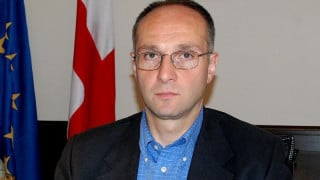On 16 September 2015, at the session of the Parliament of Georgia, a member of the United National Movement, Mikheil Machavariani, criticised the economic policy of the Government of Georgia. He mentioned the depreciation of GEL and stated that the Government of Georgia failed to deliver its promise with regard to privatisation and attracted only GEL 48 million instead of the GEL 350 million which was planned initially.
FactCheck verified Mikheil Machavariani’s statement.
On 22 February 2015, the then Minister of Economy and Sustainable Development of Georgia, Giorgi Kvirikashvili, announced plans for the acceleration of privatisation. The USD-GEL exchange rate stood at 1:2.17 at that time and the Government of Georgia decided to take certain measures to halt the depreciation of the national currency. One of those measures was to invigorate the process of privatisation. According to Giorgi Kvirikashvili, the Ministry of Economy and Sustainable Development had "a plan which included very specific steps" and in the nearest future (in a few months) the country was poised to receive USD 250-300 million income through privatisation.
In the initial draft of the 2015 budget (which was adopted by the Parliament of Georgia in December 2014) the planned amount of income from privatisation (income which the state should receive after selling land and other basic assets) was GEL 83 million which was USD 46 million according to the USD-GEL exchange rate (1:1.8) at that time. In July 2015, the Law on Budget was amended and the planned amount of income from privatisation was set at GEL 84 million. At that time, the USD-GEL exchange rate in the renewed budget was at 1:2.30. Therefore, the planned amount of income from privatisation in USD dropped to USD 37 million.
Mikheil Machavariani made his statement on 16 September 2015. At that time, the numbers from only the first eight months of privatisation income were known. The state budget received GEL 47 million whilst the budgets of local self-governing bodies received GEL 39 million through privatisation in the period of January-August of 2015. In total, the combined budget of the country received GEL 86 million which is USD 40 million if we take the average USD-GEL exchange rate throughout the year.
On 19 September 2015, the Ministry of Economy and Sustainable Development declared that so far in this year, seven large state-owned assets have been privatised and that the total income received was USD 48 million. Additionally, besides the price of privatisation as such, investors took the obligation to invest an additional minimum of USD 73 million and GEL 30 million.
More precisely, the privatised assets are:
- Non-agricultural land plot of 26,295 square metres in Tbilisi, Baghdad Street
- Former Mikhailov Hospital in Tbilisi, Aghmashenebeli Avenue
- Former Sanatorium Meshakhte in Tskaltubo, Rustaveli Street
- Real estate (Batumi Tower) in Batumi, Ninoshvili/Zhghenti Streets
- Ministry of Economy and Sustainable Development building in Tbilisi, Chanturia Street
- Non-agricultural land plot of 7,823 square metres in Tbilisi, D. Abashidze Street
- Building in Tbilisi, Aghmashenebeli Avenue
Tags:








